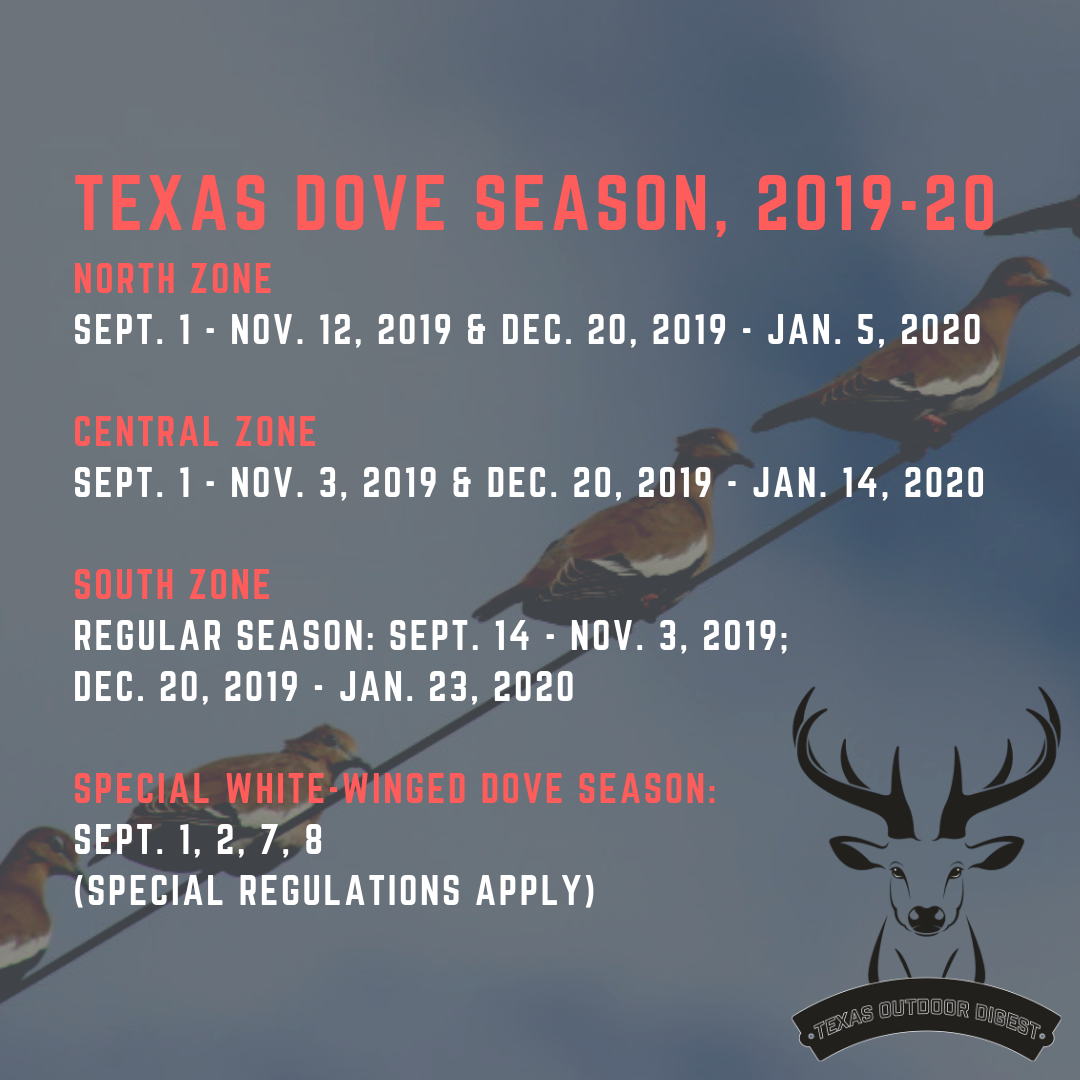
The Texas dove hunting season opener is always a welcome sight on the calendar for hundreds of thousands of Lone Star State residents. It signals the start of fall hunting seasons across the state and caters to a laid-back hunting approach, no matter where you call home.
Looking back at 2018, the dove hunting was tough in many locales for a variety of reasons. Some notable hot spots were simply left high and dry while others were inundated with rain and made unfit to hunt.
In looking at just how large dove hunting is in Texas, all you need to do is examine the numbers collected by the Texas Parks & Wildlife Department. The Lone Star State boasts fall dove populations in excess of 40 million birds and its roughly 300,000 dove hunters harvest about 10 million birds annually or nearly 30 percent of all doves taken in the United States. Dove hunting also contributes more than $300 million to the state economy.
As the start to fall and winter hunting seasons, there’s always huge interest from hunters across the state, and this year will certainly be no different.
Owen Fitzsimmons, dove program leader for TPWD, said that all signs in general point toward another solid hunting season for both mourning doves and white-winged doves across most of Texas, heading into late summer.
“This has been a really wet spring, which is good in terms of dove production,” Fitzsimmons said. “Most of the state is drought-free (in summer), which is something we haven’t had in a number of years. We did have a lot of dove production last year early, but then it kind of dropped off pretty quickly once the temperatures rose and it dried out. Time will tell, but things have been looking good across the entire state. There has been plenty of natural foods on the landscape, too.”
Fitzsimmons noted that heading into last season, the forecast was looking exceptional. However, as everyone in Texas knows, the outlook can quickly change based on the weather.
“I know last year was a tough season for many hunters because once September hit we got lots of rain and pretty much every weekend was rained out and flooded, especially down in South Texas,” Fitzsimmons said. “The couple of dove hunts I had planned down around Corpus Christi actually got rained out.”
While mourning doves continue to be the economic driver for hunts in Texas with more than 30 million birds in the breeding population, the whitewing outlook as a whole is on the rise, with the state supporting a breeding figure of more than 10 million. All those birds are continuing to expand their presence, even into areas where they’ve never been observed.
“I’m hearing more and more from hunters up north who traditionally haven’t even seen whitewings that are now getting them as a significant part of their daily bag limits,” Fitzsimmons said. “There are a lot of hunters around the big metro areas like DFW and San Antonio that are able to just go a couple of minutes outside the city and hit those agriculture fields and they’re enjoying some fantastic whitewing hunts. It’s the same story north and south of Houston. I recently even heard from a biologist in Panola County (East Texas on the border with Louisiana) who documented whitewings on a survey route, which is definitely a first, so they’re slowly and surely making their way into just about every corner of Texas and beyond. Folks in places like Oklahoma and northern New Mexico and northern Arizona and even in southern Colorado are starting to get more whitewings as well. The future definitely looks bright as far as whitewing hunting goes.”
Hunters are reminded that in addition to a valid Texas hunting license, certification in the Harvest Information Program is required. HIP certification is offered when you buy your license and involves responding to a few simple questions about your migratory game bird harvest during the previous season. TPWD also is conducting ongoing dove banding research and asks hunters to please report leg bands recovered on harvested birds by calling 1-800-327-BAND. TPWD bands thousands of doves annually across the state. Hunters also may report banded birds online.
“We’re continuing our banding efforts on both mourning doves and whitewings, and we always encourage hunters to check the legs of the doves they shoot,” Fitzsimmons said. “Hunters should report those bands because that goes directly toward how we manage our seasons. The information we get, especially from mourning doves, comes from banding data. It’s an important piece of the puzzle as far as annual management goes.”
2019-20 Texas Dove Seasons
North Zone: Sept. 1 – Nov. 12, 2019 & Dec. 20, 2019 – Jan. 5, 2020
Central Zone: Sept. 1 – Nov. 3, 2019 & Dec. 20, 2019 – Jan. 14, 2020
Special White-winged Dove Days (entire South Zone): Sept. 1-2, 7-8 (special regulations apply)
South Zone, Regular Season: Sept. 14 – Nov. 3, 2019; Dec. 20, 2019 – Jan. 23, 2020
The daily bag limit for doves statewide is 15 and the possession limit 45.
During the early two weekends for the Special White-Winged Dove Days in the South Zone, hunting is allowed only from noon to sunset and the daily bag limit is 15 birds, to include not more than two mourning doves and two white-tipped doves. During the general season in the South Zone, the aggregate bag limit is 15 with no more than two white-tipped doves.

















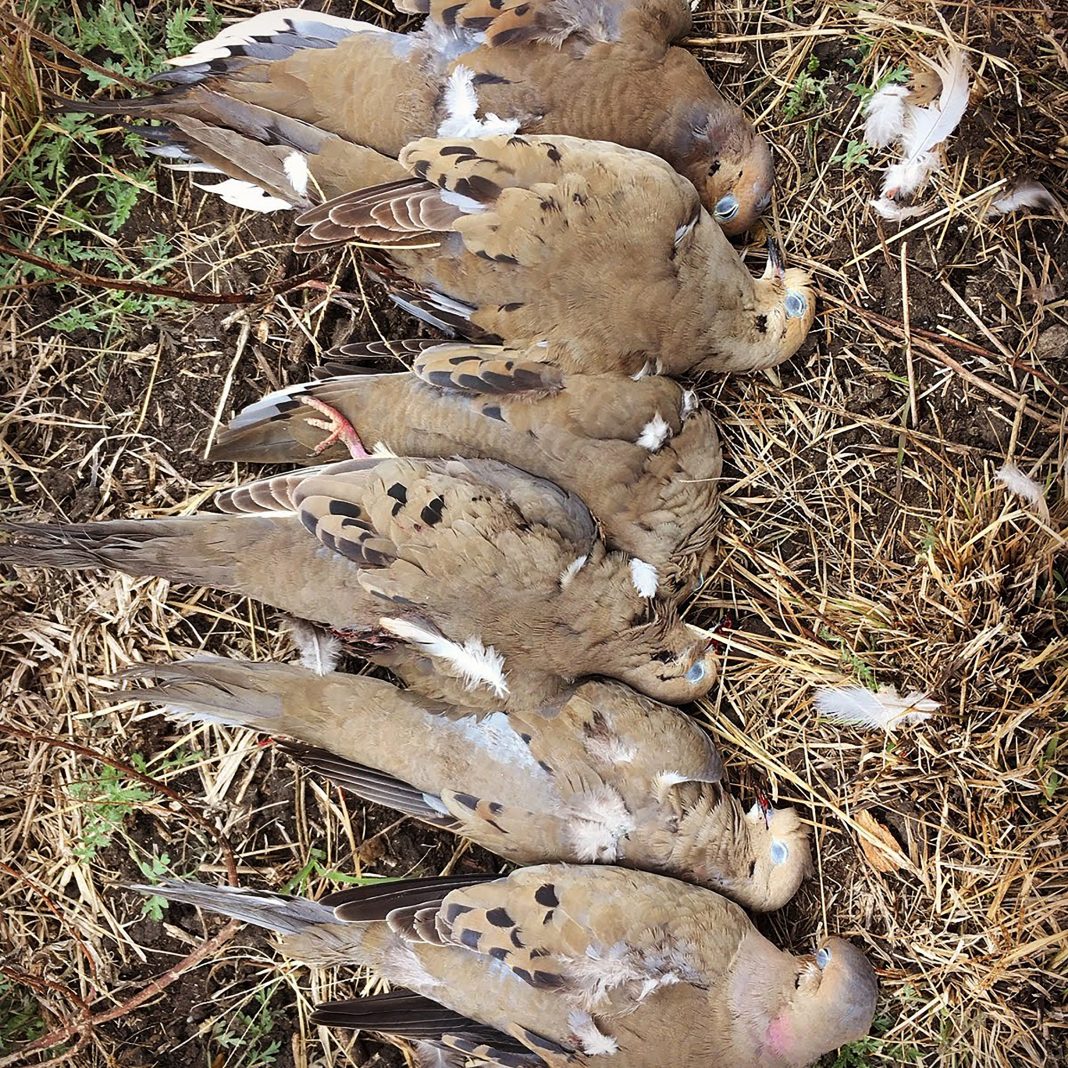
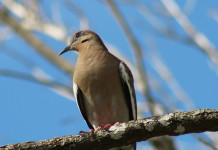
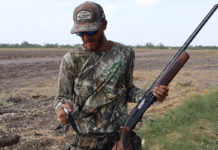
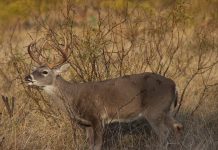


i drove from dallas to llano and back through what is deemed the “dove capital” of texas last sat/mon and saw a total of twenty five doves and zero hunters monday. something is wrong in texas, regardless of the rosy predictions.
Sorry to hear that but there are plenty of folks in that area who have had outstanding hunts. And in South Texas, the whitewing hunting is already off the charts. Full limits and happy hunters even though it’s still early.